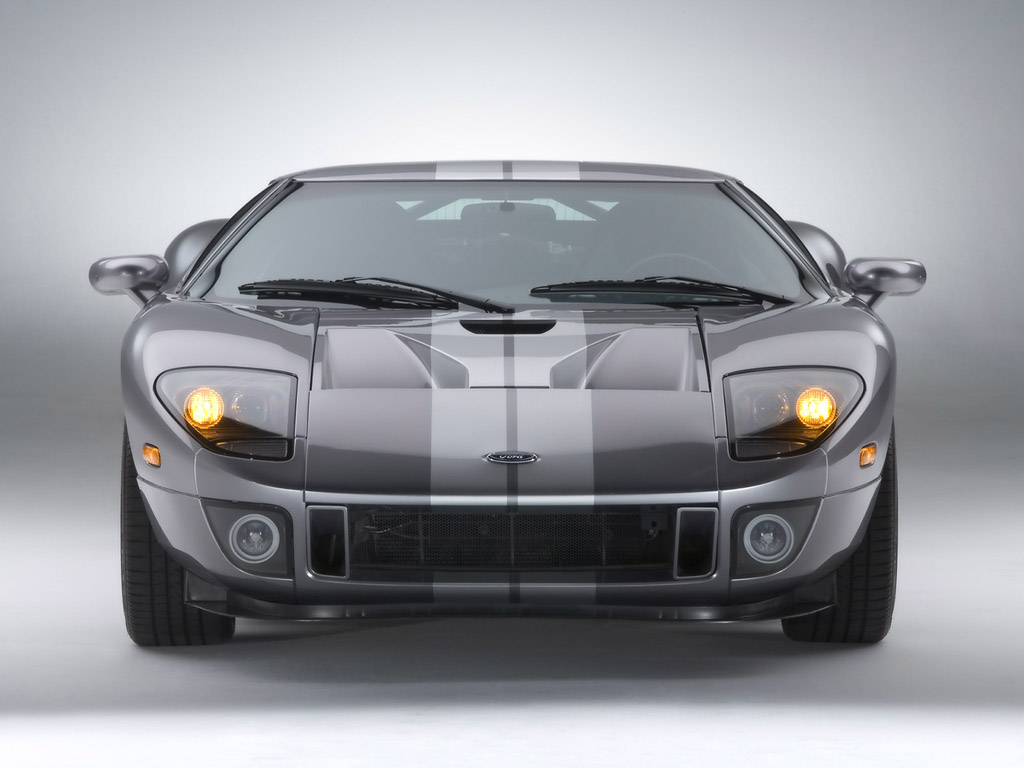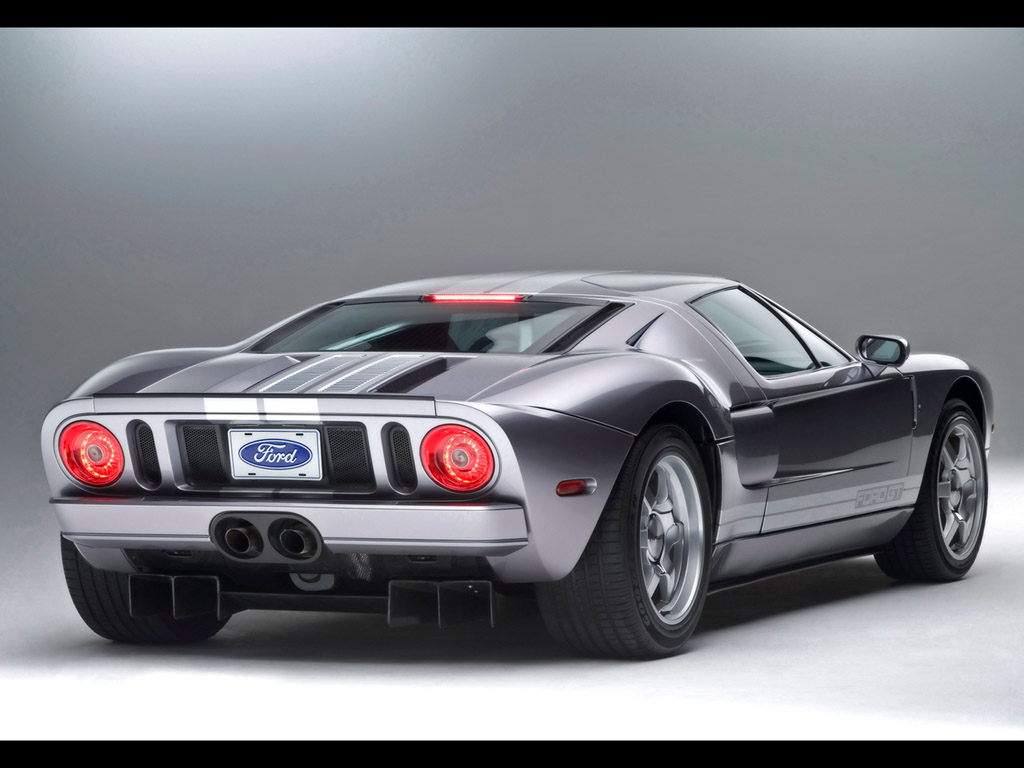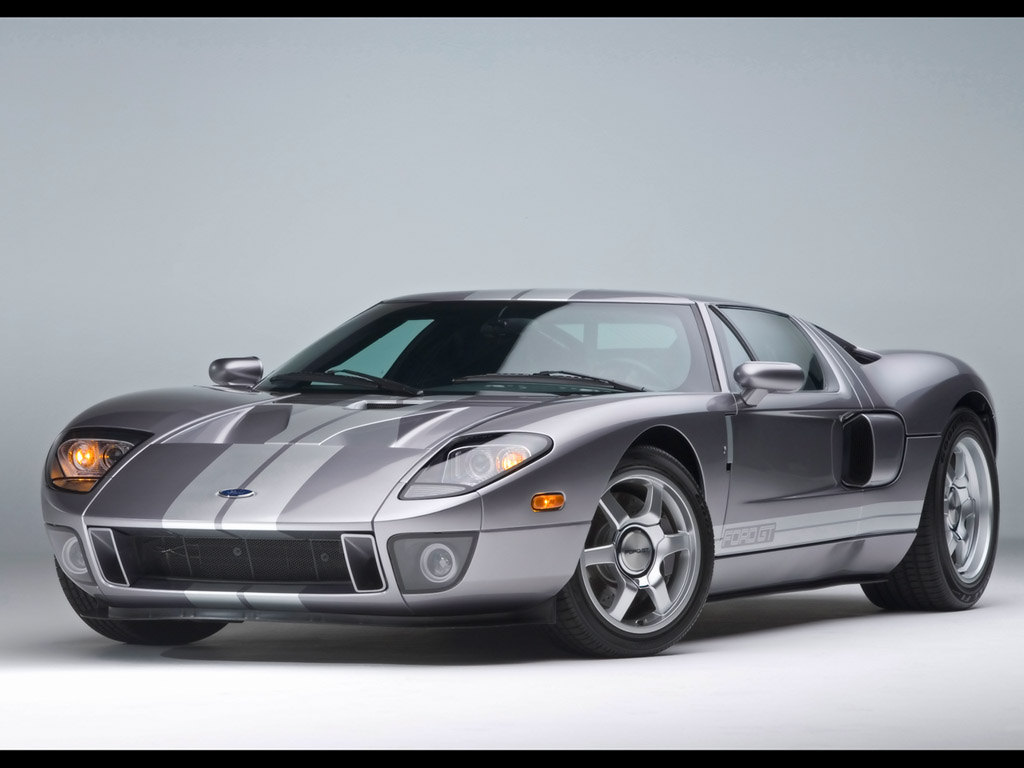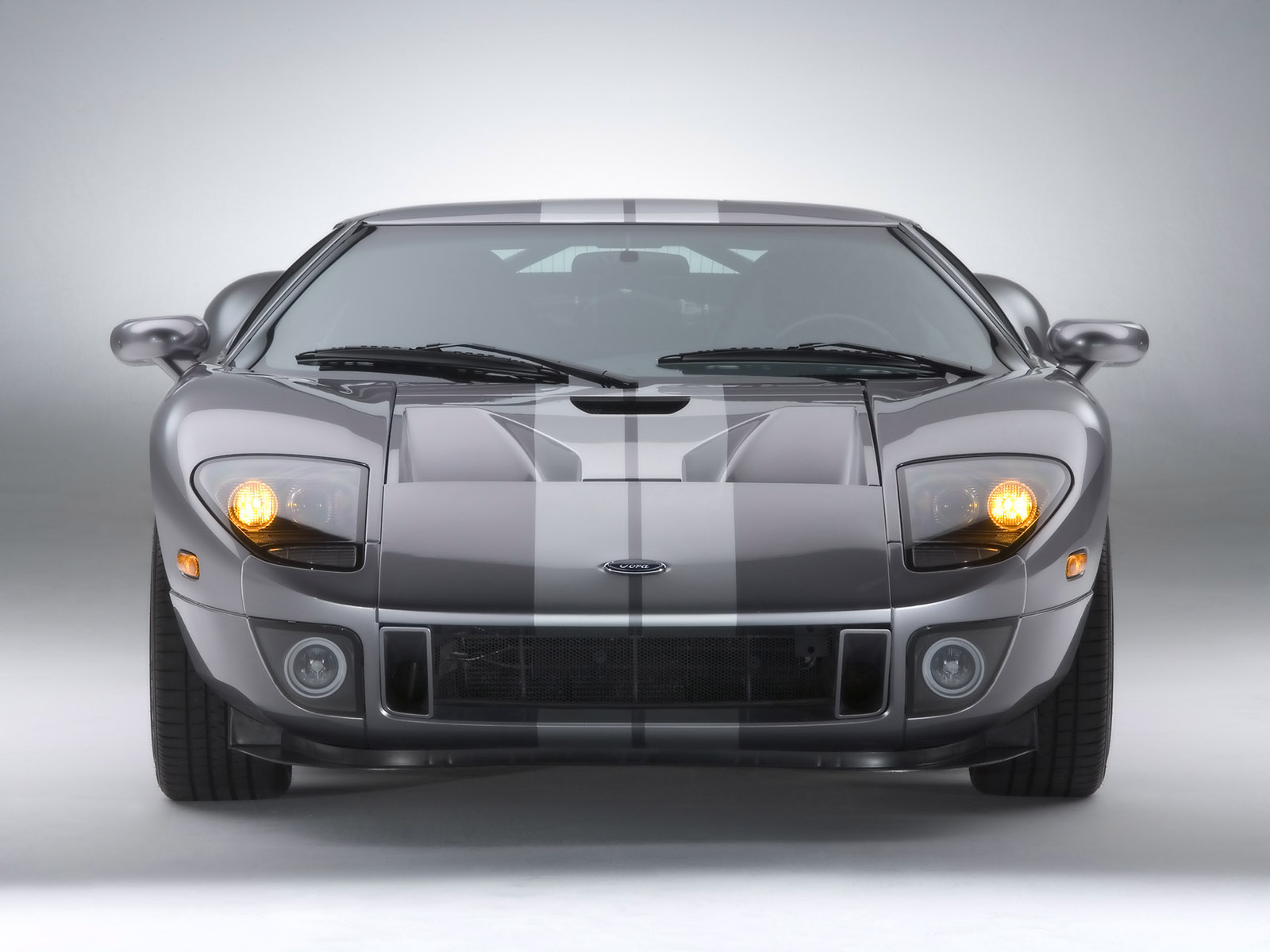2005 Ford Tungsten GT Limited Edition
(from Ford Press
Release) Here they come, lights blazing through the rain
that darkens the late afternoon French sky this 19th day of June in
1966. Three Ford GT40 Mk II racecars take the checkered flag in
photo formation after 24 hours of grueling competition at Le Mans.
History has been made. Ford has bested Ferrari - and everyone else
for that matter. In fact, Ford has not just bested the field, but
rather has won impressively with a stunning 1-2-3 finish.
2006 marks the 40th anniversary of that historic event, the start of
Ford's remarkable four-year winning streak of the 24 Hours of Le
Mans. A special limited-edition exterior color, Tungsten Silver, is
being offered on the 2006 Ford GT to commemorate that sterling
victory.
But Ford isn't just celebrating its past. Instead, the company looks
forward, building on its heritage with its Special Vehicle Team
enhancing the performance of Ford products now and into the future.
"June 19, 1966 was probably the second most important day in Ford
Motor Company history," says Phil Martens, group vice president,
Product Creation. "The first, of course, was October 10, 1901 when
Henry Ford won his first and only race in the 'Sweepstakes' race
car, helping launch Ford Motor Company. Six decades later, sweeping
Le Mans proved to the world that Ford Motor Company could beat the
most prestigious manufacturers in the world. Those two events helped
establish a culture of performance at Ford Motor Company that to
this day benefits our products, engineering expertise, and brand
loyalty. Today, that culture is embodied in the Ford GT, aptly
titled the pace car for the entire company."
Meeting the challenge -- again
In the 1960s, to
establish the company as a force to be reckoned with on the world
stage, Henry Ford II challenged his team to compete against the
world's best in the world's most important endurance race. He called
on the company to rally around the effort and enlisted Carroll
Shelby to campaign the Ford cars at Le Mans. "There were so many
people involved that I don't take credit for it," Carroll Shelby
says as he looks back on the historic events. "I'm just thankful
that I was part of it."
Nearly four decades after that initial Le Mans victory, Bill Ford
issued a similar rallying cry to the company. But this time Ford
would take on the world's best not on the racetrack but on the
street. With the 2005 Ford GT, the company demonstrated it could
deliver world's-best performance at a price well below the typical
exotic car stratosphere.
Engineered by Ford Special Vehicle Team
A quarter century after
the Le Mans sweep, Ford established its Special Vehicle Team to
produce high-performance versions of Ford vehicles. SVT's reputation
for exceptional performance was quickly established by the likes of
the SVT F-150 Lightning, SVT Focus, SVT Contour and SVT Mustang
Cobra. The team's engineering experience and passion for performance
proved essential in developing and delivering the Ford GT supercar
to market.
"SVT demonstrated that it could build a great, ultra
high-performance supercar and compete with anybody in the world,"
says Hau Thai-Tang, director, Advanced Product Creation and Special
Vehicle Team. "We designed an all-new car from the ground up and in
record time. We piloted a lot of technology and processes that are
now being adopted into mainstream Ford programs.
"Not only is SVT recognized as a center of excellence for
performance vehicles, but it is also on the leading edge of
developing technology - superforming of body panels, aluminum
spaceframe chassis architecture, supercharged engines, advanced
aerodynamics - as well as the methodology for getting things to
market quicker and at lower costs."
The Ford GT was unveiled as a concept car at the North American
International Auto Show in Detroit in January 2002. It was the
centerpiece of Ford's aggressive product onslaught in answer to a
challenging period for the company. Weeks later, Ford Chairman Bill
Ford announced that the Ford GT would go into production, and he
challenged the team to have the first three production cars ready
not in the usual four or five-year timeframe, but for the Ford
Centennial celebration scheduled just 15 months later.
The team met the chairman's challenge. Three Ford GTs - one of them
driven by Bill Ford himself - were in the Centennial parade.
The Ford GT delivers 550 horsepower and a certified 205-mph top
track speed rating, with styling inspired by the historic racecars
and a comfortable and contemporary interior, all for a base price of
under $140,000.
An ultra high-performance two-seat sports car, the Ford GT is built
on an aluminum spaceframe chassis with super-plastic-formed aluminum
body panels and an aluminum-over-carbon engine cover.
A mid-mounted supercharged 5.4-liter V-8 delivers 500 pound-feet of
torque. Power flows to the rear wheels through a six-speed manual
transaxle. Independent suspension, large Brembo brakes and Goodyear
Eagle F1 Supercar tires on 18-inch front and 19-inch rear wheels all
are standard equipment.
Just a few months after the car's introduction, Car & Driver
magazine in its January 2004 cover story "Judgment Day!" clocked the
Ford GT's 0-60 mile-per-hour acceleration at 3.3 seconds and
quarter-mile performance at 11.6 seconds at 128 mph. In the same
test, Ferrari's $193,000 Challenge Stradale took four seconds to
reach 60 mph and was 0.8 seconds and 13 mph slower through the
quarter-mile. Other tests, even with much more expensive exotic
sports cars, have shown similar results.
Just as in the 1960s, Ford took on the world's best, and won.
Tungsten Silver highlights Ford GT design details
To commemorate the 40th
Anniversary of the Ford's first win at Le Mans, the 2006 Ford GT
will be offered in a limited-edition Tungsten Silver, which replaces
Quick Silver on the Ford GT's color palette. A Quick Silver racing
stripe can be added to the Tungsten Silver package.
Tungsten Silver was developed for the 2004 North American
International Auto Show Ford "Performance Trilogy" show cars - the
Ford GT, the Shelby Cobra roadster concept and the new 2005 Mustang
GT. Customer demand was so overwhelming that the color was added to
the production palette.
"There's good contrast between the colors," says Camilo Pardo, chief
designer of the Ford GT. "But it's a discreet contrast. In Tungsten
Silver, the Ford GT is really dressy, like a fine suit. It looks
mature.
"This dark silver color also brings out all the design features and
the subtleties of the car," he adds. "In fact, people who've seen it
thought we'd added a feature line around the side of the car. It's
always been there, but you may not notice it in the car's other
colors. The Tungsten Silver really brings it out."
Pardo notes that in the design studio, clay models are covered with
"Dynoc" material that is a similar hue to Tungsten silver. The color
is specifically designed to enhance the vehicle design details for
evaluation.
"We use silver to evaluate our designs throughout the whole
process," he says. "It brings out the subtleties, the returns and
the negatives, the differences between horizontal and vertical
surfaces."
There's a little GT in every SVT
Just like the Ford GT,
the products coming from SVT are designed to offer an outstanding
high-performance and value proposition.
"It's hard to say a $140,000 car is a bargain, but the Ford GT is an
incredible value proposition even if it may not be affordable to the
typical Ford buyer," says Thai-Tang.
For them, Ford SVT models offer an affordable taste of the
performance, high quality, and passionate driving experience of the
Ford GT.
"People may say 'I know I can't buy a Ford GT'," says Thai-Tang. But
with an SVT product, that customer knows, "'I can buy a little piece
of the GT'."
Ford victories at Le Mans
1966; Ford Mk II; Ford
Motor Company/Shelby American; Bruce McLaren, Chris Amon;
Second-place car driven by Ken Miles and Denis Hulme and third-place
car driven by Ronnie Bucknum and Dick Hutcherson finished in close
formation behind their winning teammates.
1967; Ford Mk IV; Ford Motor Coompany/Shelby American; Dan Gurney,
A.J. Foyt Jr. (Ford Mk IV driven by Bruce McLaren and Mark Donohue
finished fourth behind its teammate.)
1968; Ford GT40; John Wyer Automotive Engineering; Pedro Rodriguez,
Lucien Bianchi
1969; Ford GT40; John Wyer Automotive Engineering; Jacky Ickx,
Jackie Oliver (Ford GT40 driven by David Hobbs and Mike Hailwood was
third behind its teammate.)



